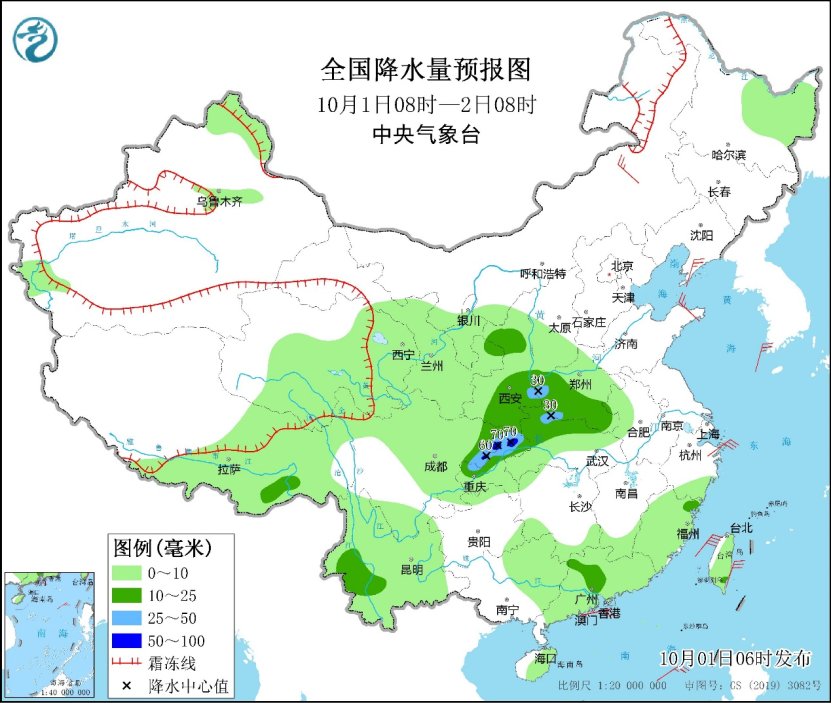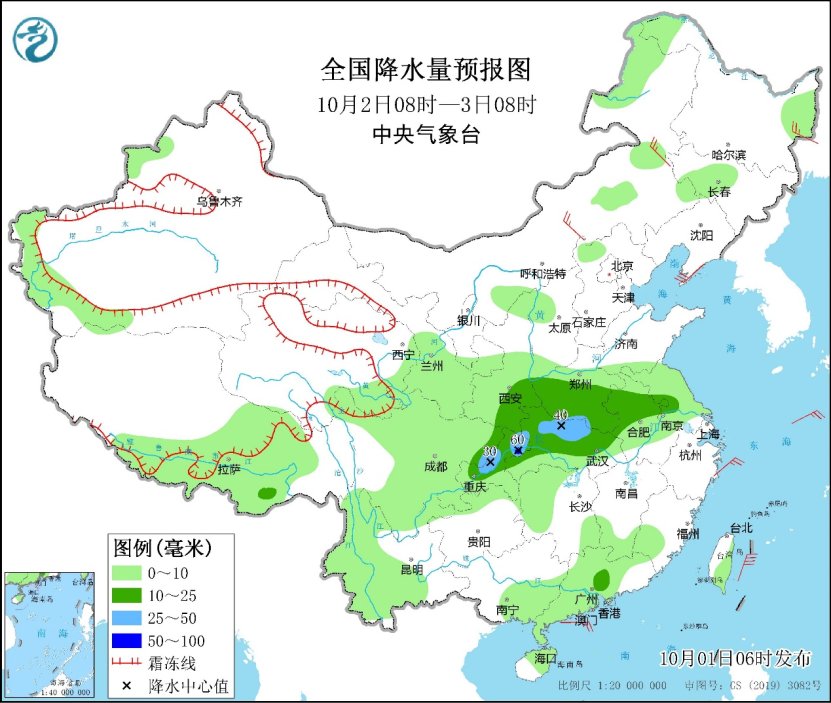Central Meteorological Observatory: Most of the country is sunny on the National Day, and it will be rainy in West China in the next three days.
Cctv newsAccording to the Central Meteorological Observatory, yesterday, there were heavy rains or rainstorms in parts of northeastern and central Chongqing, northeastern Guizhou, southwestern Hubei, northwestern Hunan, western Jiangxi, south-central Zhejiang, southwestern Yunnan and other places, and heavy rains occurred locally. In the next three days, there will still be persistent rainy weather in West China, including moderate to heavy rain and local heavy rain in parts of eastern Sichuan, Chongqing, southwestern Shaanxi, most of Hubei and southern Henan. In addition, it is expected that the weather in most other parts of the country will be fine today, which is suitable for going out to play.
Today, there are moderate to heavy rains in parts of northern and southern Shaanxi, southern Henan, northwestern Hubei, northern Chongqing, eastern Sichuan and southwestern Yunnan, and heavy rains (50-70 mm) in parts of northeastern Sichuan Basin and northeastern Chongqing.
Meteorologists reminded that there are many rainy days in West China, and the local rainfall is large. The public should pay attention to the adverse effects of continuous rainfall and local heavy rainfall on traffic travel, arrange travel reasonably, and stay away from areas with high risk of meteorological disasters.



Finally, pay attention to the trend of the typhoon. At 5 o’clock today, the center of the typhoon "Little Dog" is located on the northwest Pacific Ocean about 1010 kilometers east-north of Manila, Philippines. The maximum wind force near the center is 8 (20 m/s), and the lowest pressure in the center is 995 hectopascals. It is estimated that it will move to the north-west direction at a speed of 10~15 kilometers per hour, and then it will turn to the west direction on the 3rd, and its intensity will gradually increase, and the strongest can reach the strong typhoon level (14~15, 45 ~ 50m/s). On the 5th, it will move into the northeast of the South China Sea, and then it will approach the coast from the west of Guangdong to the east of Hainan Island, and its intensity will gradually weaken.
